What is reconstituted veneer ?
Look’likes is made of real wood but not with the actual wood species. We give a wood specie such as ayous, spruce or poplar the appearance of a different wood specie such as oak, ebony or teak. In addition, you can also explore our Look’likes art collection which includes five exclusive and artistic designs.
As a designer you love to work with attractive materials but your focus is also on economic and ecological solutions. Look’likes have it all: the great looks of real wood in an affordable and environment-friendly product. These are benefits that every designer can appreciate. The consistent colour without major dye variations is an advantage when using these materials for contemporary interior designs.
Our Look‘Likes collection allows you to design with endless creativity. This sustainable design collection is available in different products so each application can easily be realised.
Reconstituted veneer is manufactured using real wood but not the actual wood of the wood species. We explain the process below.
1. Rotary cut veneer
 The logs of ayous, spruce or poplar are rotary cut to produce the veneer. We do this by rotating the log around its axis. A knife is positioned against the log to peel off a thin layer of wood. During this process we also cut the correct width of the wood. The logs of ayous, spruce or poplar are rotary cut to produce the veneer. We do this by rotating the log around its axis. A knife is positioned against the log to peel off a thin layer of wood. During this process we also cut the correct width of the wood.
2. Dyeing
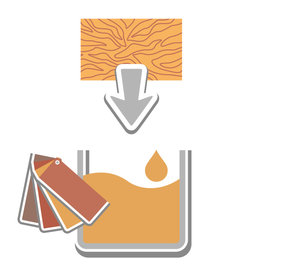 Dyeing is an important part of the process when producing reconstituted veneer. The strips of veneer we described in step 1 are stained in the desired colour. The veneer strips are submerged in a bath of water at a specific temperature and with the required dye concentrate. The dyeing process uses 100% water-based dyes. No heavy metals or other toxic substances are used to manufacture the Look'likes collection. Dyeing is an important part of the process when producing reconstituted veneer. The strips of veneer we described in step 1 are stained in the desired colour. The veneer strips are submerged in a bath of water at a specific temperature and with the required dye concentrate. The dyeing process uses 100% water-based dyes. No heavy metals or other toxic substances are used to manufacture the Look'likes collection.
3. Creating the pattern
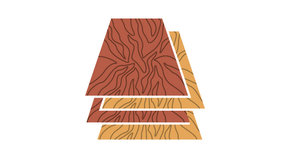 The dyed veneer strips are mixed to produce the desired reconstituted wood species or design. The dyed veneer strips are mixed to produce the desired reconstituted wood species or design.
4. Gluing
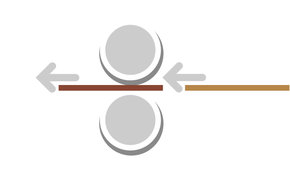 The pile of veneer is glued after stacking as a block. Glue is applied to each strip during this process. The glue also influences the final appearance of the product because we can also add staining components to it. The pile of veneer is glued after stacking as a block. Glue is applied to each strip during this process. The glue also influences the final appearance of the product because we can also add staining components to it.
5. Pressing the logs
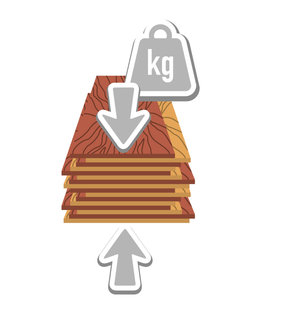 The veneer block described in step 4 is now placed in a press. The press plates can be flat or have a certain shape. This also has an impact on the appearance. For example: using a wavy press plate can be used to obtain the appearance of a rotary veneer structure. The veneer block described in step 4 is now placed in a press. The press plates can be flat or have a certain shape. This also has an impact on the appearance. For example: using a wavy press plate can be used to obtain the appearance of a rotary veneer structure.
6. Finishing the logs / 7. Cutting
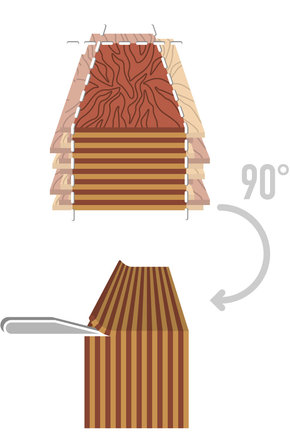 After gluing, the block is sawn to create a perfect rectangular 'log'. This 'log' is subsequently sanded and now ready for further processing into reconstituted veneer. / The log is cut to veneer with a thickness of 0.6 mm. This is the raw material that Decospan uses to produce the different Look'likes products. After gluing, the block is sawn to create a perfect rectangular 'log'. This 'log' is subsequently sanded and now ready for further processing into reconstituted veneer. / The log is cut to veneer with a thickness of 0.6 mm. This is the raw material that Decospan uses to produce the different Look'likes products.
|














